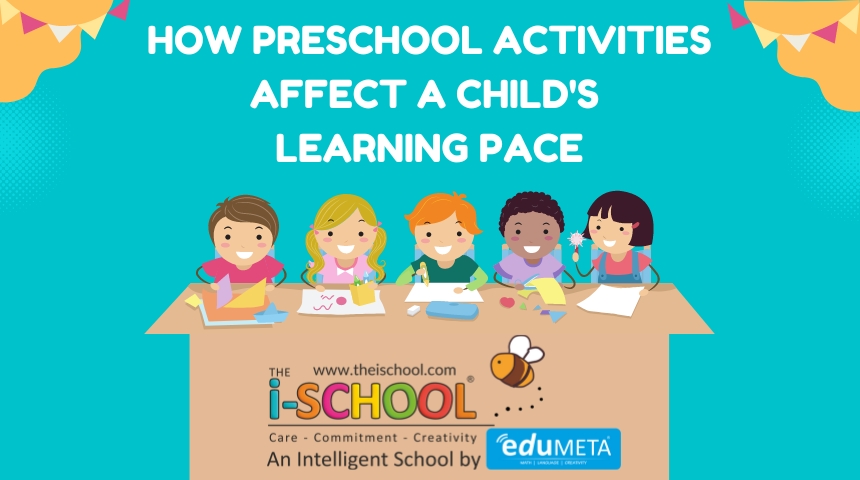How Preschool Activities Affect a Child’s Learning Pace

Preschool is a critical period in a child’s development, where foundational skills and knowledge are established. The activities designed for preschoolers play a significant role in shaping their learning pace and overall development. Here’s how various preschool activities can influence a child’s learning pace.
1. Cognitive Development Activities
Puzzle Games and Problem-Solving Tasks:
- Impact: These activities stimulate a child’s cognitive abilities, improving their problem-solving skills, memory, and logical thinking.
- Example: Activities like jigsaw puzzles, matching games, and simple math tasks help children develop critical thinking and reasoning skills.
Benefits:
- Enhances memory and recall
- Encourages independent thinking
- Develops analytical skills
2. Language and Literacy Activities
Storytelling and Reading:
- Impact: Storytelling and reading sessions enrich a child’s vocabulary, comprehension, and language skills, setting the foundation for effective communication.
- Example: Regular reading sessions, interactive storytelling, and phonics games help children understand language structure and improve their listening skills.
Benefits:
- Builds a robust vocabulary
- Enhances listening and comprehension skills
- Prepares children for reading and writing
3. Social and Emotional Development Activities
Role-Playing and Group Games:
- Impact: These activities teach children about emotions, empathy, and social interactions, crucial for their emotional intelligence and social skills.
- Example: Role-playing different scenarios, group games, and cooperative tasks help children learn to share, take turns, and resolve conflicts.
Benefits:
- Fosters emotional intelligence
- Encourages cooperation and teamwork
- Builds confidence and self-esteem
4. Physical Development Activities
Outdoor Play and Motor Skills Exercises:
- Impact: Physical activities improve a child’s gross and fine motor skills, coordination, and overall physical health.
- Example: Activities like running, jumping, climbing, and fine motor tasks like drawing and cutting enhance physical development and coordination.
Benefits:
- Develops motor skills and coordination
- Promotes physical health and fitness
- Enhances concentration and focus
5. Creative Development Activities
Arts and Crafts:
- Impact: Creative activities stimulate a child’s imagination, creativity, and problem-solving abilities.
- Example: Engaging in arts and crafts, such as painting, drawing, and building with blocks, allows children to express themselves and think creatively.
Benefits:
- Encourages creative expression
- Develops fine motor skills
- Enhances problem-solving and critical thinking
6. Sensory Development Activities
Sensory Play:
- Impact: Sensory activities, which engage multiple senses, help children understand and process the world around them.
- Example: Playing with sand, water, and textured materials can enhance sensory perception and cognitive development.
Benefits:
- Improves sensory processing
- Enhances cognitive and motor skills
- Encourages exploration and curiosity
7. Structured and Unstructured Play
Balanced Playtime:
- Impact: A mix of structured and unstructured play helps children learn at their own pace while developing essential life skills.
- Example: Structured activities provide guidance and objectives, while unstructured play allows children to explore and use their creativity freely.
Benefits:
- Develops self-regulation and discipline
- Encourages creativity and independence
- Balances learning and fun
Conclusion
Preschool activities are instrumental in shaping a child’s learning pace and overall development. By providing a balanced mix of cognitive, language, social, physical, creative, and sensory activities, educators and parents can support children in developing essential skills at their own pace. Understanding the impact of these activities can help in designing a preschool curriculum that fosters holistic development and prepares children for future academic and life success.
